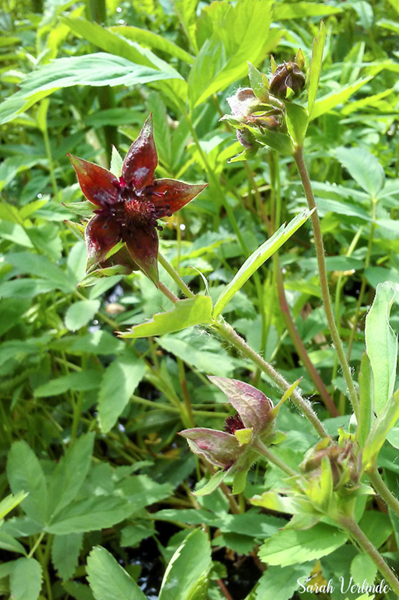Purple marshlocks
Comarum palustre – Marsh cinquefoil
At a Glance:

- Family: Rosaceae
- Plant Type: Spreading somewhat aquatic plant, stems float and send out shoots nearby
- Distribution: Widely distributed, Northern USA, Canada, and Greenland
- Habitat: Saturated areas in wetlands, bogs, lakeshores, and ponds
- Height: 1m
- Flowers: purple-red-brown in color with five petals
- Flowering Season: June-August
- Leaves: 5-7 leaflets, light green with a lighter green underside, oblong to lanceolate with serrate margin
- Generation: Perennial
Restoration and Conservation
Marsh cinquefoil tolerates cold latitudes and excels in ponds and lake marshes. The foliage at the surface and rooted stems can stabilize soil and slow down water. It is an attractive plant excellent to use for home water features, and the flowers provide nectar for bees and other pollinators.
Ethnobotany
Different parts of the plant have been used by Native Americans. The Chipewa/Ojibwe tribes used the roots in a decoction as an antidiarrheal and to treat stomach cramps. Alaskan tribes used the dried leaves and drank them as tea (no medicinal purpose, just as a cup of tea).
References and Resources
- NAEB: http://naeb.brit.org/uses/search/?string=Comarum+palustre
- WTU Image Herbarium: http://biology.burke.washington.edu/herbarium/imagecollection/taxon.php?Taxon=Comarum%20palustre
This article was written by Sarah Verlinde. For questions regarding the UWB/CC Plant Tour, contact Sarah at severlin@uw.edu.
